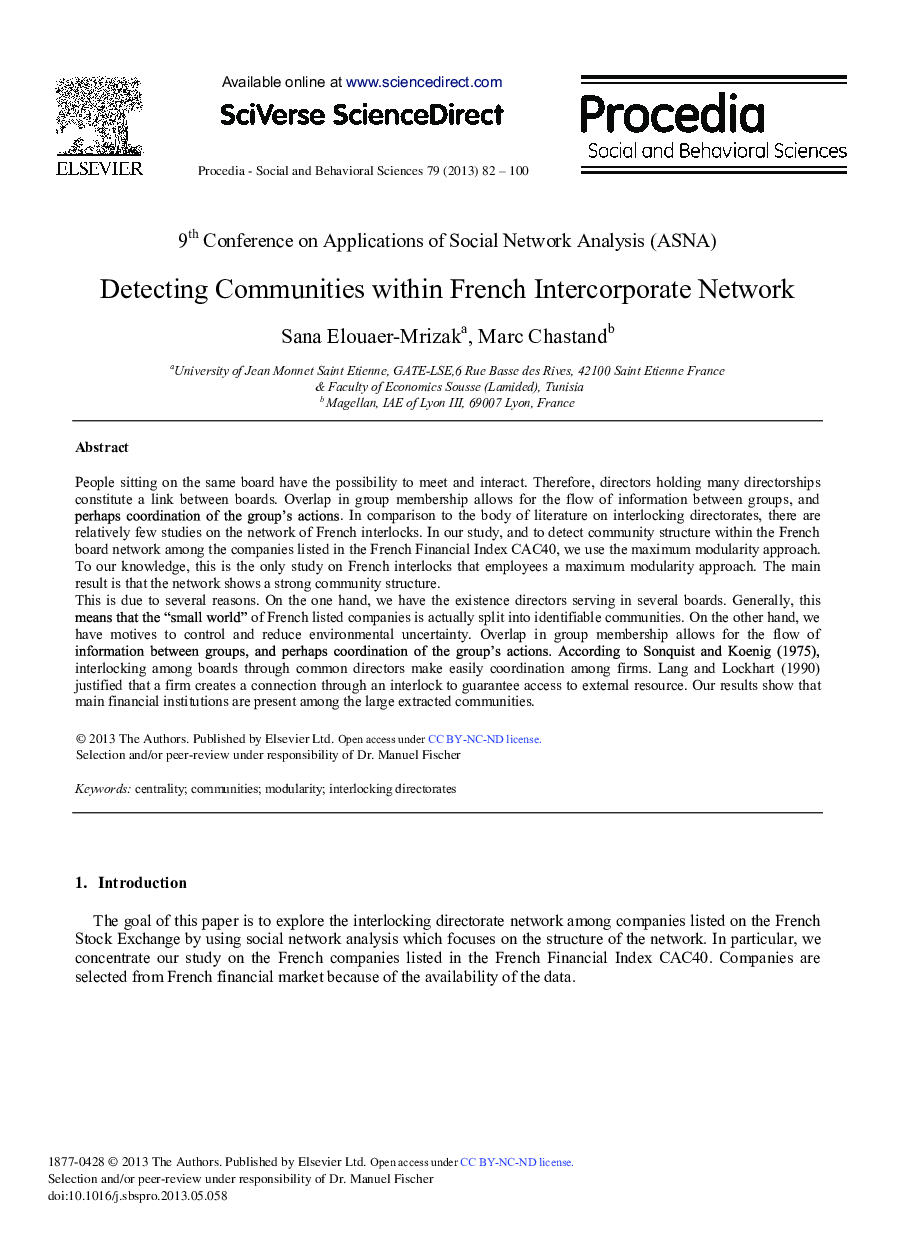| کد مقاله | کد نشریه | سال انتشار | مقاله انگلیسی | نسخه تمام متن |
|---|---|---|---|---|
| 1119218 | 1488480 | 2013 | 19 صفحه PDF | دانلود رایگان |

People sitting on the same board have the possibility to meet and interact. Therefore, directors holding many directorships constitute a link between boards. Overlap in group membership allows for the flow of information between groups, and perhaps coordination of the group's actions. In comparison to the body of literature on interlocking directorates, there are relatively few studies on the network of French interlocks. In our study, and to detect community structure within the French board network among the companies listed in the French Financial Index CAC40, we use the maximum modularity approach. To our knowledge, this is the only study on French interlocks that employees a maximum modularity approach. The main result is that the network shows a strong community structure.This is due to several reasons. On the one hand, we have the existence directors serving in several boards. Generally, this means that the “small world” of French listed companies is actually split into identifiable communities. On the other hand, we have motives to control and reduce environmental uncertainty. Overlap in group membership allows for the flow of information between groups, and perhaps coordination of the group's actions. According to Sonquist and Koenig (1975), , interlocking among boards through common directors make easily coordination among firms. Lang and Lockhart (1990) justified that a firm creates a connection through an interlock to guarantee access to external resource. Our results show that main financial institutions are present among the large extracted communities.
Journal: Procedia - Social and Behavioral Sciences - Volume 79, 6 June 2013, Pages 82-100